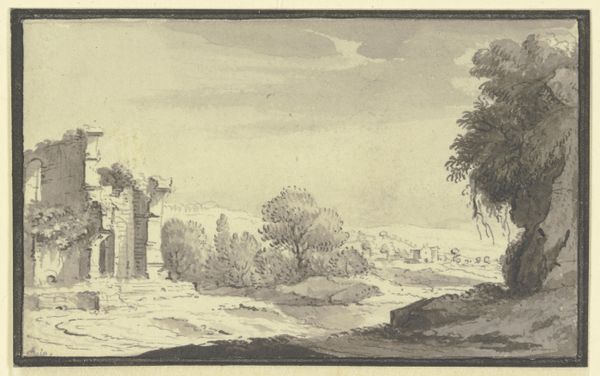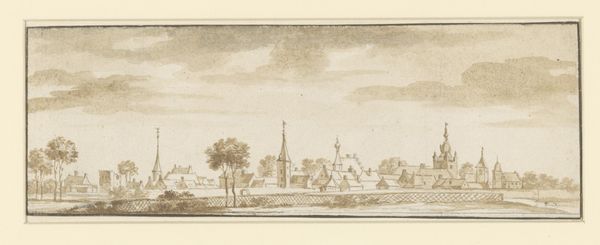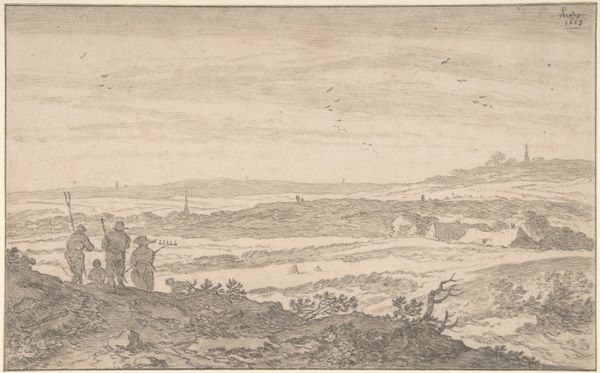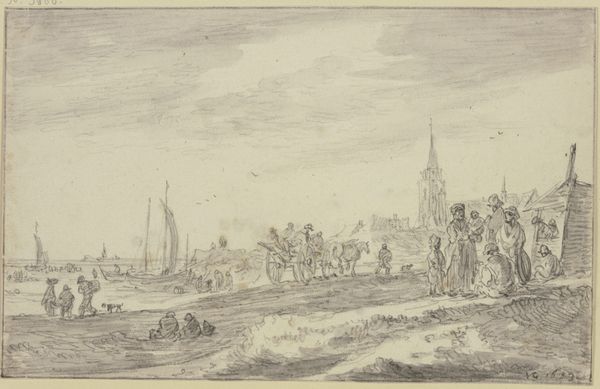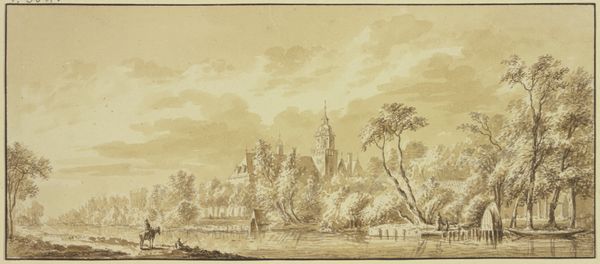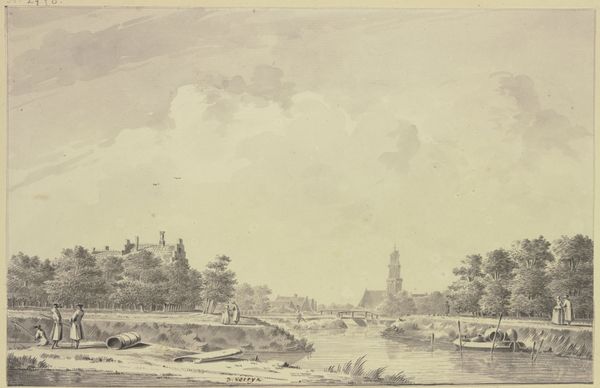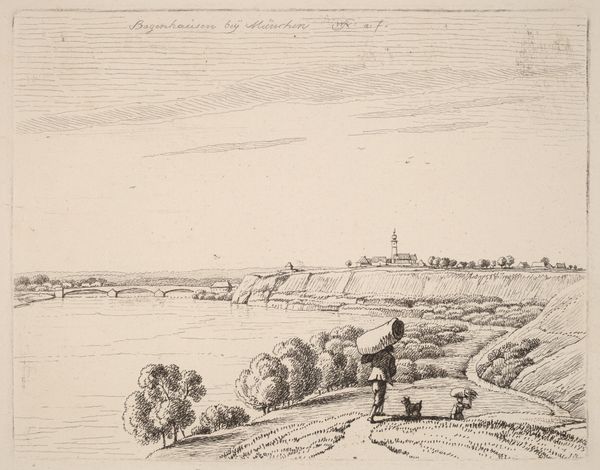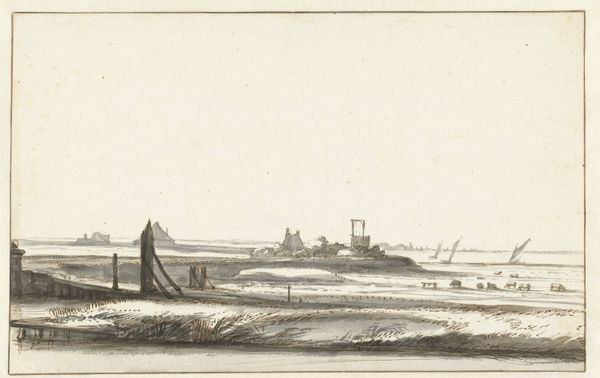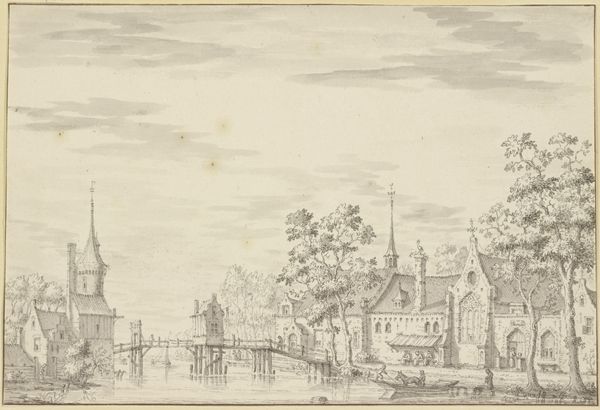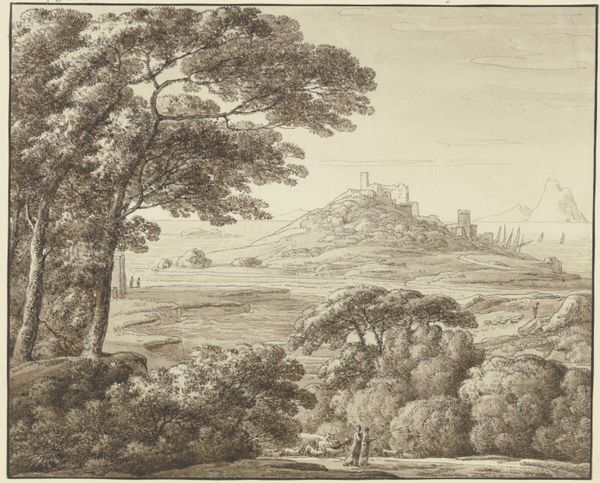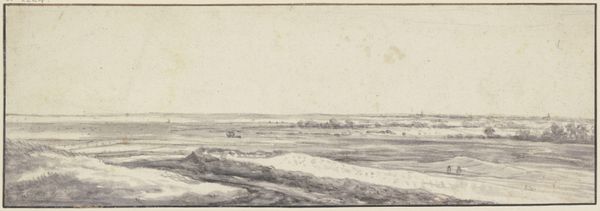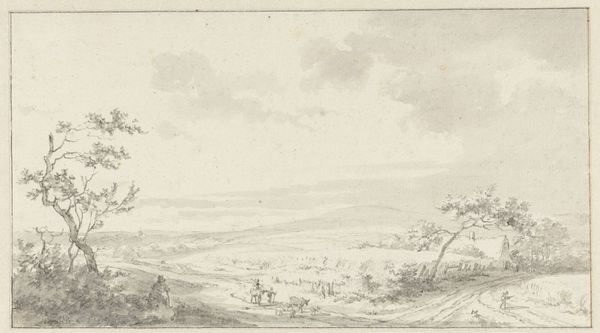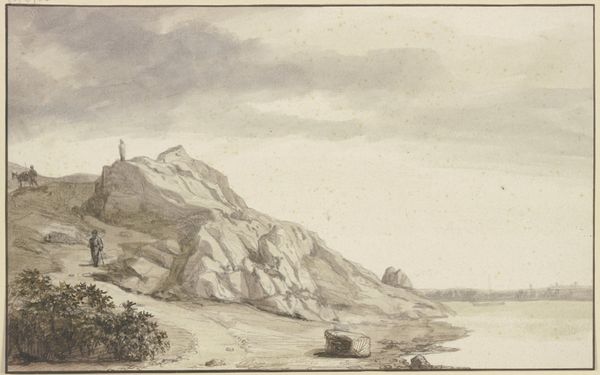
Landschaft, links ein Turm, einige Mauern und Häuser, rechts Gebüsch, Fernsicht
0:00
0:00
drawing, paper, ink, pencil, chalk
#
pencil drawn
#
drawing
#
baroque
#
landscape
#
paper
#
ink
#
pencil drawing
#
pencil
#
chalk
#
14_17th-century
Copyright: Public Domain
Curator: This work, skillfully rendered with pencil, ink, and chalk on paper, is titled "Landschaft, links ein Turm, einige Mauern und Häuser, rechts Gebüsch, Fernsicht," attributed to Anthonie Waterloo. The landscape, though seemingly simple, pulls you in. Editor: It certainly does. My initial response is one of quiet solitude. The delicate shading and muted tones evoke a sense of calmness and almost melancholy. It’s as if time is standing still in this scene. Curator: That's a wonderful observation. The image appears to date from the 17th century, during the Baroque period, when landscape art was developing an emphasis on detailed observation and conveying a sense of the sublime. Waterloos contributions, however, lay more in a humanization of the environment. He embraced landscape art, especially scenes like this one that feel bucolic and relatable. Editor: Yes, relatable but, tell me, are these actual places represented, or impressions of life in that period? I’m thinking about how these depictions could also speak to power dynamics within that environment. Are we meant to see an idealized, perhaps sanitized, version of rural life? Curator: Those are key points to unpack, especially with the perspective of contemporary theory in mind. While this could reflect real elements, the picturesque composition and serene mood are constructed. Consider who had access to land and resources in the 17th century, and who is omitted or overlooked in the image. The artwork does invite reflection about rural realities beyond what the artist shows. Editor: I agree, it begs us to ask 'whose reality is represented?' and 'whose is conveniently left out?' We cannot merely appreciate the aesthetic appeal without questioning the narrative it promotes. Curator: I think your reading enriches our understanding, recognizing both the artwork's inherent beauty, the masterful strokes, and the potential power dynamics present or, as you suggest, purposely absent within the artist’s chosen framework. Editor: And it reminds us that art never exists in a vacuum but is constantly shaped and reshaped by forces from within the artist’s environment and long after, by the viewers that analyze and reflect upon it.
Comments
No comments
Be the first to comment and join the conversation on the ultimate creative platform.
